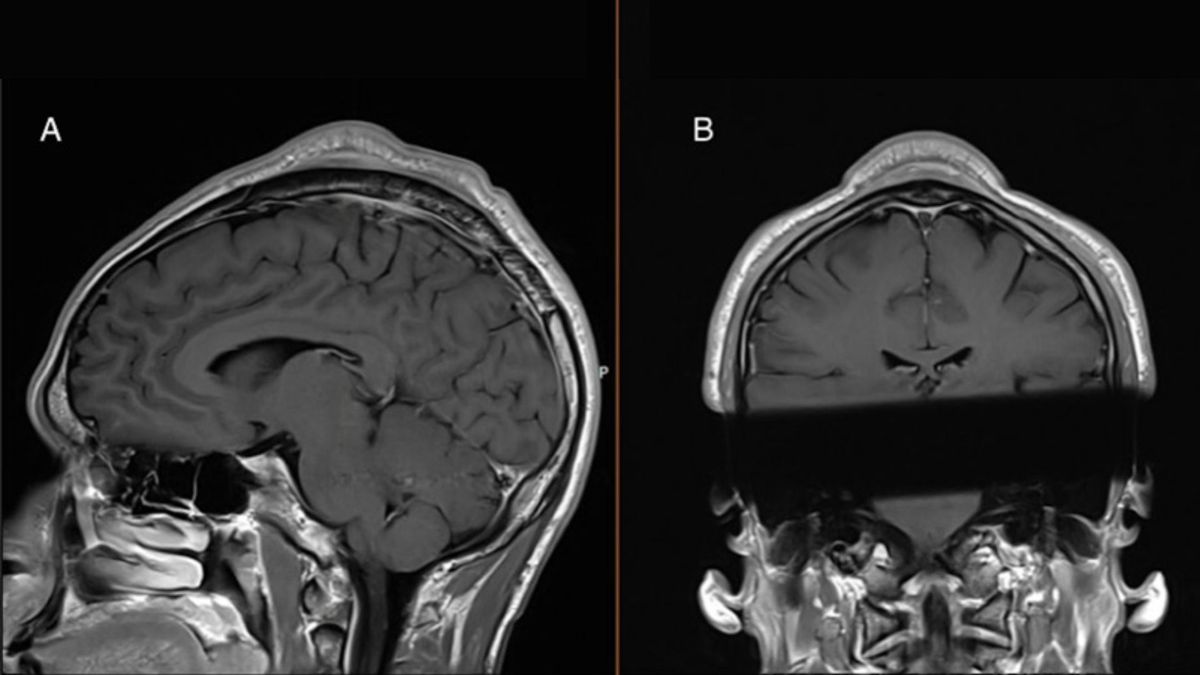A man developed a “breakdance bulge” on the top of his head after repeatedly practicing headspins, doctors report.
The bulbous lump of tissue, which doctors surgically removed, had become tender to the touch and was associated with a circle of hair loss. These hairless bumps on the head are also commonly called “headspin holes,” and more broadly, the condition is sometimes called “breakdancer overuse syndrome.”
“Despite ‘headspin hole’ being known within the breakdancing community, it is scarcely documented in the medical literature,” the doctors noted in a paper published Thursday (Oct. 10) in the journal BMJ Case Reports. Based on their results, treating these bumps on the head with surgery “appears to be a successful intervention,” the physicians said.
Breakdancing — or breaking, as it’s known by practitioners — incorporates power moves that may involve balancing in off-kilter poses or spinning on top of the head, for example. The dancer in this case, a man in his early 30s, had been practicing various types of headspins for more than 19 years. He reported training about five times a week for 1.5 hours at a time; about two to seven minutes of each session would be spent putting direct pressure on the top of his head.
Related: ‘Breaking,’ aka breakdancing, is in the Olympics for the 1st time — here’s the brain science behind it
The man said he noticed a bump, accompanied by hair loss, forming on his scalp. And in the past five years, the bump had grown and become tender to the touch.
“The presence of the lesion and associated discomfort were aesthetically displeasing to the patient, but the protuberance had not hindered the patient from continuing his head-spinning activities,” the man’s doctors noted.
Upon examining the bump, doctors noted that the skin above it moved easily, suggesting the mass was sandwiched between the skin and the skull. A structural scan of the man’s head confirmed this was the case, and it also showed that the skin above the bump and the skull below had grown thicker than the tissues surrounding them.
During surgery, doctors removed the large lump of tissue from beneath the man’s scalp. They also shaved the thickened portion of his skull back down to its normal width.
“I have received a lot of positive feedback and people say it looks well done, that I have a nice scar,” the patient said in a statement included in the case report. “Many say that they no longer notice that I have a bump and that my head looks completely normal.”
Although this “breakdance bulge” phenomenon isn’t well researched, the studies that do exist suggest that breakers who practice headspins may be prone to hair loss and bumps on the tops of their heads.
This limited literature hints that practicing headspins three or more times a week may come with the highest risk of hair loss, compared with practicing the move less frequently. The hair loss may result from physical trauma or scarring to the top of the head, or from traction alopecia, which happens when hair follicles become damaged from repeated pulling at the root of the hair.
Some reports suggest that headspins may be tied to a heightened risk of lichen planopilaris, an inflammatory condition in which immune cells attack hair follicles, causing balding.
Data suggest that this circular hair loss doesn’t always come with a painful bump. In a German study of around100 breakers, about 60% had experienced some kind of overuse injury to the tops of their heads. Of those cases, about 31% had hair loss and 24% developed painless bumps on their heads. About 37% had scalp inflammation.
Notably, “publications regarding this condition are scarce,” the doctors said in their report. So the exact prevalence of headspin holes among b-boys and b-girls is unclear.
“This case report represents a pioneering effort in detailing a clinical instance of ‘headspin hole,'” the authors concluded.
This article is for informational purposes only and is not meant to offer medical advice.
Ever wonder why some people build muscle more easily than others or why freckles come out in the sun? Send us your questions about how the human body works to community@livescience.com with the subject line “Health Desk Q,” and you may see your question answered on the website!


